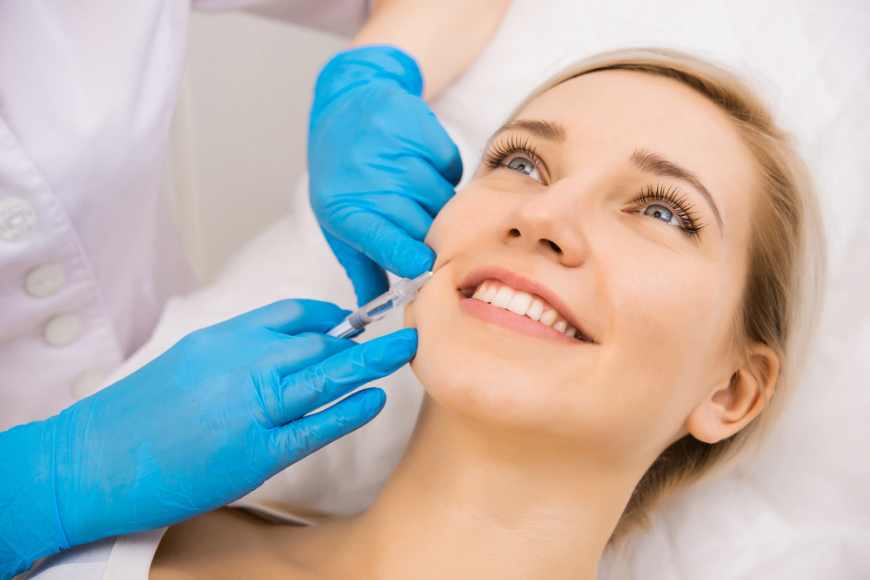Dermal fillers have become an incredibly popular cosmetic treatment worldwide, including in Dubai. Whether you’ve had fillers to smooth wrinkles, add volume, or contour facial features, dermal fillers in Dubai offer a non-surgical, minimally invasive solution to enhance your appearance. However, as with any cosmetic treatment, temporary side effects like swelling can occur.
Swelling is a natural part of the healing process after receiving dermal fillers, but there are several ways to reduce and manage it effectively. In this blog post, we’ll cover why swelling happens, how to reduce it, and what aftercare steps you can take to ensure smooth, beautiful results.
Why Does Swelling Occur After Dermal Fillers?
Swelling after derma fillers is a common and expected reaction. When a needle or cannula is used to inject the filler into the skin, it creates tiny micro-injuries that the body responds to with inflammation. This inflammation can cause the treated area to swell. Additionally, the filler itself takes up space under the skin, which can contribute to a temporary increase in volume immediately after the procedure.
Factors that may increase swelling include:
- Injection Technique: Multiple injections or injecting into deeper layers of the skin can cause more swelling.
- Treatment Area: Certain areas of the face, such as the lips and under-eye area, are more prone to swelling due to their sensitivity and thin skin.
- Filler Type: Hyaluronic acid fillers, which attract water, can contribute to slight swelling as the product absorbs moisture in the skin.
- Individual Reaction: Each person’s body reacts differently to dermal fillers, and some individuals may experience more swelling than others.
How Long Does Swelling Last After Dermal Fillers?
Swelling after dermal fillers typically lasts anywhere from a few hours to a few days, depending on the individual and the treatment area. In most cases, the majority of swelling subsides within 48 hours. However, it may take up to a week for the treated area to fully settle and for the final results to become visible.
In more sensitive areas like the lips, swelling may last a bit longer but usually resolves within 3 to 5 days. It’s important to remember that swelling is temporary and should gradually decrease as the filler settles into place.
How to Reduce Swelling After Dermal Fillers
While some swelling is inevitable, there are several steps you can take to minimize it and speed up the recovery process. Here are the top ways to reduce swelling after receiving derma fillers in Dubai:
1. Use Cold Compresses
One of the most effective ways to reduce swelling after dermal fillers is to apply a cold compress to the treated area. Cold compresses help constrict blood vessels, reducing blood flow to the area and minimizing swelling and inflammation. To use a cold compress:
- Wrap ice or a cold gel pack in a clean cloth.
- Apply it gently to the swollen area for 10-15 minutes at a time.
- Avoid applying ice directly to the skin, as this can cause frostbite or irritation.
Applying cold compresses regularly in the first 24 hours after the procedure can significantly reduce swelling.
2. Keep Your Head Elevated
Keeping your head elevated can help reduce swelling after dermal filler treatments. When lying down, use an extra pillow to keep your head raised, especially during the first night after the procedure. This prevents fluid from accumulating in the treated area, reducing the risk of excessive swelling.
3. Avoid Strenuous Activity
Engaging in strenuous physical activity, such as exercise, can increase blood flow to the face, which may worsen swelling after receiving derma fillers. It’s best to avoid high-intensity workouts, heavy lifting, or any activity that elevates your heart rate for at least 24 to 48 hours after the procedure.
Light walking and gentle movements are fine, but give your body time to recover before resuming your regular fitness routine.
4. Stay Hydrated
Hydration is essential for your body’s healing process. Drinking plenty of water helps flush out excess fluid and reduces swelling. Additionally, hyaluronic acid fillers absorb moisture, so staying hydrated can improve the overall results of your treatment by ensuring the filler works effectively to plump and hydrate your skin.
5. Avoid Heat and Sun Exposure
Heat can increase swelling and prolong the recovery process. Avoid saunas, steam rooms, hot showers, and direct sun exposure for at least a few days after your dermal filler treatment. If you need to go outdoors, apply a broad-spectrum sunscreen with an SPF of at least 30 to protect your skin from UV damage, which can affect the filler’s longevity.
6. Refrain from Touching or Massaging the Treated Area
While it might be tempting to touch or massage the treated area, it’s essential to avoid doing so for at least 24 hours after your treatment. Touching or pressing on the filler can cause it to move, leading to uneven results. Let the filler settle naturally into place without interference.
7. Avoid Alcohol and Salt
Alcohol can dilate blood vessels and increase swelling, so it’s best to avoid consuming alcohol for 24 to 48 hours after your treatment. Similarly, salty foods can lead to water retention, which may worsen swelling. Stick to a balanced, low-sodium diet to minimize fluid retention and support the body’s healing process.
8. Take Antihistamines or Anti-Inflammatory Medications
If your swelling persists or is more pronounced, over-the-counter antihistamines like cetirizine or anti-inflammatory medications like ibuprofen (as long as approved by your practitioner) can help reduce inflammation and swelling. However, it’s essential to consult your doctor before taking any medications, as some may interact with your treatment.
Aftercare Tips for Long-Term Results
While managing swelling is crucial in the short term, proper aftercare also ensures the longevity of your dermal fillers and keeps your skin looking its best. Here are some long-term aftercare tips for maintaining your filler results:
1. Moisturize and Hydrate Regularly
Hyaluronic acid fillers work by attracting moisture to the skin. Keeping your skin hydrated by using a good moisturizer and drinking plenty of water helps maintain the plumpness and effectiveness of your fillers.
2. Protect Your Skin from the Sun
Sun damage can accelerate the breakdown of dermal fillers, so it’s essential to protect your skin with sunscreen and avoid excessive sun exposure. Make sunscreen a part of your daily skincare routine to preserve the results of your treatment.
3. Schedule Maintenance Appointments
Dermal fillers are not permanent, and over time, the body gradually absorbs the filler material. To maintain your desired look, schedule regular touch-up appointments with your cosmetic specialist. Depending on the type of filler used, maintenance treatments may be needed every 6 to 18 months.
Why Choose Dermal Fillers in Dubai?
Dubai has become a global leader in cosmetic treatments, with many people choosing the city for its advanced procedures, world-class practitioners, and luxurious clinics. Here are a few reasons why derma fillers in Dubai are highly sought after:
1. Expertise of Cosmetic Specialists
Dubai is home to some of the world’s most skilled and experienced cosmetic specialists, many of whom are internationally trained. Whether you’re receiving dermal fillers for the first time or are a returning patient, you can trust that you’re in capable hands when seeking treatment in Dubai.
2. State-of-the-Art Clinics
Cosmetic clinics in Dubai are equipped with cutting-edge technology, offering the latest advancements in aesthetic treatments. These clinics provide patients with a comfortable, high-end experience while ensuring safety and top-quality care.
3. Customized Treatment Plans
Each patient’s facial structure and aesthetic goals are unique, and derma fillers in Dubai are tailored to meet these individual needs. From subtle enhancements to dramatic transformations, patients receive personalized treatment plans to achieve their desired results.
When to Contact Your Practitioner
While swelling after derma fillers is common and usually resolves on its own, there are certain situations where you should contact your practitioner. Seek medical advice if you experience:
- Swelling that worsens after 48 hours or doesn’t improve.
- Severe pain or bruising at the injection site.
- Signs of infection, such as increased redness, warmth, or pus at the treatment area.
- Allergic reactions, such as difficulty breathing or hives.
Your cosmetic specialist will provide you with the necessary aftercare advice to ensure a smooth recovery.
Conclusion
Swelling after receiving derma fillers in Dubai is a natural part of the healing process and typically resolves within a few days. By following these aftercare tips—such as applying cold compresses, staying hydrated, and avoiding strenuous activity—you can reduce swelling and ensure that your fillers settle beautifully. With proper care, your dermal filler treatment will provide you with the long-lasting, youthful results you desire.he
How to Reduce Swelling After Dermal Fillers in Dubai









